By John Seewer
The Associated Press, carried in AOL News
May 12, 2006
http://articles.news.aol.com/news/article.adp?id=20060510211009990001&cid=2194
TOLEDO, Ohio (May 12) - A priest was convicted Thursday of murder in the slaying of a nun who was found stabbed 26 years ago in a hospital chapel, her forehead "anointed" with a smudge of blood and her wounds forming an upside-down cross on her chest.
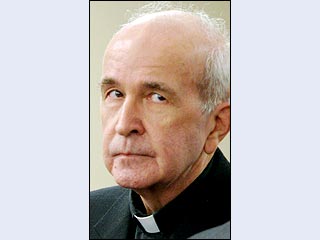 |
|
Rev. Gerald Robinson, 68, was convicted in the 1980 murder of Sister Margaret Ann Pahl, who was strangled and stabbed at Toledo's Mercy Hospital. Photo by Daniel Miller, AP |
The Rev. Gerald Robinson, 68, was immediately sentenced to the mandatory term of 15 years to life in prison and led away in handcuffs after a trial in which forensic experts matched the victim's wounds to a distinctive, sword-shaped letter opener found in the priest's room.
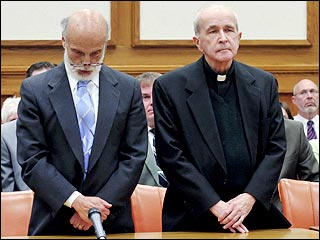 |
|
The jury took six hours to reach a verdict. Robinson's friends and family gasped when it was read. The priest showed no reaction. Photo by Andy Morrison, Pool/AP |
The jury took six hours to reach a verdict. Robinson's friends and family gasped when it was read. The Roman Catholic priest showed no reaction.
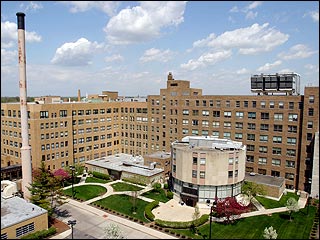 |
|
Pahl's body was found in the chapel by another nun. Robinson was the hospital's chaplain and presided over Pahl's funeral. Photo by Daniel Miller, AP |
Robinson, who had worked closely with Sister Margaret Ann Pahl as the hospital chaplain and presided at her funeral Mass, was a suspect early on but was not charged until two years ago. Prosecutors took a closer look at the slaying after he was anonymously accused of molestation. Those allegations have not been substantiated.
 |
|
The case went cold for 20 years. Police reopened it after bloodstains on an altar cloth were found to match a letter opener from Robinson's room. Photo by Daniel Miller, AP |
Prosecutors suggested that Robinson's relationship with the nun was strained and had finally reached a breaking point. According to testimony, Pahl was a strict taskmaster as the caretaker of the chapel and was upset over Good Friday worship services being shortened.
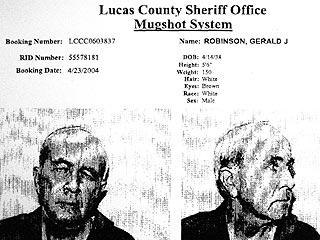 |
|
Robinson, seen here his booking sheet when arrested in April 2004, was questioned by police twice in the weeks after the killing. Photo by The Toledo Sheriff's Department / Getty Images |
Pahl, 71, was killed while preparing the Mercy Hospital chapel for Easter services on April 5, 1980. She was choked and then stabbed 31 times, the blade plunged repeatedly through an altar cloth that was left over her body in what prosecutors said looked like a ritual slaying.
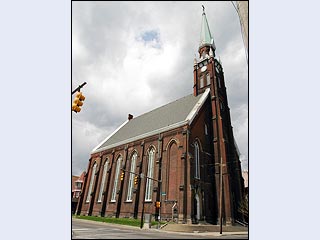 |
|
Saint Anthony Church in Toledo was where Robinson traditionally held Mass on Holy Saturdays and Christmas Photo by The Toledo Sheriff's Department / Getty Images |
Prosecutor Dean Mandros said Robinson inflicted the stab wounds in the shape of an upside-down cross, anointed Pahl with her own blood in a macabre version of the last rites and stripped off her underwear "to degrade her, to mock her, to humiliate her."
Defense attorney John Thebes said he and his client were shocked by the verdict and will appeal.
Bishop Leonard Blair of the Toledo Diocese issued a statement noting that Robinson is a retired priest barred from any public ministry. "Let us hope that the conclusion of the trial will bring some measure of healing for all those affected by the case as well as for our local church," Blair said.
The case hinged largely on the letter opener, which had a diamond-shaped cross-section and a dime-sized medallion with an image of the U.S. Capitol. Forensic experts said the blade was used to inflict the wounds, the medallion appeared to be the source of a faint stain on the altar cloth.
Also, witnesses said they saw Robinson outside the chapel about the time of the killing; the priest told police he was in his room showering.
The defense noted that DNA evidence failed to link Robinson to the crime. The nun's underwear and fingernails had traces of DNA that were probably from a man but not from Robinson, Thebes said. The priest's attorneys also said witnesses gave conflicting accounts of Robinson's whereabouts around the time of the slaying.
Robinson was a popular priest in this blue-collar city of about 300,000, where a quarter of the residents are Catholic. He was especially well-liked in Polish neighborhoods because he delivered some sermons and heard confessions in Polish.
He was transferred from the hospital a year after the stabbing and became pastor at three parishes in Toledo. At the time of his arrest, he ministered to the sick and dying in nursing homes and hospitals.
After his arrest, allegations swirled that police did not pursue the case thoroughly because the main suspect was a priest and that the killing was some kind of ritual slaying.
Any original material on these pages is copyright © BishopAccountability.org 2004. Reproduce freely with attribution.